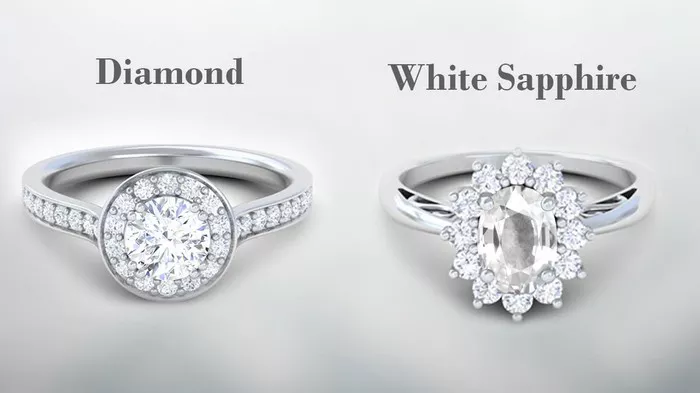When considering alternatives to diamonds, white sapphires often emerge as a popular choice. While diamonds have long been hailed as the epitome of elegance and luxury, various factors such as cost, ethical concerns, and personal preference drive people to seek other options. White sapphire, with its stunning appearance and relative affordability, stands out as a prominent contender. This article delves into the characteristics of white sapphire, compares it to diamonds, and evaluates whether it serves as a good diamond substitute.
Understanding White Sapphire
Composition and Properties
White sapphires belong to the corundum family, a crystalline form of aluminum oxide. Typically, sapphires are known for their vibrant blue hue, but they can occur in a variety of colors, including white. The absence of trace elements that impart color to other sapphires results in the clear, colorless appearance of white sapphire.
Key properties of white sapphires include:
Hardness: White sapphires rate a 9 on the Mohs scale, making them one of the hardest gemstones, surpassed only by diamonds and moissanite.
Durability: Their hardness ensures resistance to scratching and chipping, making white sapphires suitable for everyday wear.
Luster: While they exhibit a good degree of brilliance, their luster tends to be more vitreous compared to the adamantine luster of diamonds.
Availability and Sourcing
White sapphires are mined in various regions around the world, including Sri Lanka, Myanmar, Madagascar, and Australia. Ethical concerns surrounding gemstone mining have led to increased scrutiny and the promotion of responsibly sourced stones. White sapphires are often favored over diamonds due to fewer ethical issues in their mining practices.
Comparing White Sapphire and Diamond
Visual Appeal
Brilliance and Fire: One of the primary reasons diamonds are coveted is their exceptional brilliance and fire, which result from their high refractive index and dispersion. While white sapphires are undoubtedly beautiful, they have a lower refractive index and dispersion, leading to less brilliance and fire. This difference is noticeable when the stones are viewed side by side.
Color and Clarity: High-quality diamonds are prized for their clear, colorless appearance and minimal inclusions. White sapphires, though colorless, can sometimes exhibit a slight milky appearance or inclusions that affect their clarity. This can make a white sapphire look less “sparkly” compared to a diamond of similar quality.
Price and Value
Affordability: One of the most significant advantages of white sapphires over diamonds is their cost. White sapphires are substantially more affordable, offering a budget-friendly alternative for those who desire the look of a colorless gemstone without the hefty price tag. This affordability extends to both the initial purchase and long-term maintenance.
Investment Value: Diamonds tend to hold their value better over time compared to white sapphires. The resale value of a diamond is often higher, making it a better investment option. However, for those prioritizing immediate cost savings, white sapphire is an attractive option.
Durability and Maintenance
Hardness: While diamonds are the hardest known natural material, white sapphires are also incredibly durable. Their 9 rating on the Mohs scale ensures that they can withstand daily wear and tear, making them a practical choice for engagement rings and other frequently worn jewelry.
Care and Cleaning: Both diamonds and white sapphires require regular cleaning to maintain their brilliance. White sapphires, however, are more prone to surface scratches and may need more frequent polishing compared to diamonds. Proper care involves avoiding exposure to harsh chemicals and ensuring safe storage to prevent damage.
Ethical and Environmental Considerations
Mining Practices
The diamond industry has faced considerable criticism over unethical mining practices, including child labor, environmental degradation, and funding of conflicts (known as blood diamonds). While there are efforts to improve transparency and ethics in diamond sourcing, concerns remain.
See Also: How to Wear a Blue Sapphire Bracelet
White sapphires, on the other hand, are generally associated with fewer ethical issues. Countries like Sri Lanka and Australia, known for their sapphire mining, have more stringent regulations and ethical mining practices. Choosing white sapphires can be a more socially responsible option for consumers concerned about the origins of their gemstones.
Synthetic and Lab-Created Options
Both diamonds and white sapphires are available in synthetic and lab-created forms. Lab-created diamonds and sapphires offer identical physical and chemical properties to their natural counterparts while minimizing environmental impact. They also tend to be more affordable and free from the ethical issues associated with traditional mining.
Personal Preferences and Trends
Aesthetic Preferences
Personal taste plays a significant role in gemstone selection. Some individuals prefer the unique characteristics and historical allure of diamonds, while others are drawn to the distinctive appeal and cost-effectiveness of white sapphires. The choice often depends on what the wearer values most in their jewelry.
Popularity in Jewelry
White sapphires have gained popularity in recent years, especially among those seeking unique and budget-friendly engagement rings. They offer a contemporary twist on traditional diamond rings, appealing to couples looking for something different. Designers have also embraced white sapphires, incorporating them into various styles and settings.
Conclusion
The answer to whether white sapphire is a good diamond substitute largely depends on individual priorities and preferences. White sapphires offer several advantages, including affordability, durability, and ethical sourcing, making them an excellent alternative for many consumers. However, they do not completely replicate the brilliance and fire of diamonds, and their resale value is typically lower.
For those who prioritize budget, ethical considerations, and unique beauty, white sapphires are an outstanding choice. Conversely, individuals seeking the unparalleled brilliance, investment value, and traditional status symbol associated with diamonds may find that nothing else quite measures up.
Ultimately, both gemstones have their unique appeal, and the decision comes down to what aligns best with the buyer’s values and desires. Whether opting for the timeless allure of a diamond or the modern elegance of a white sapphire, both choices offer their own distinctive beauty and significance.

